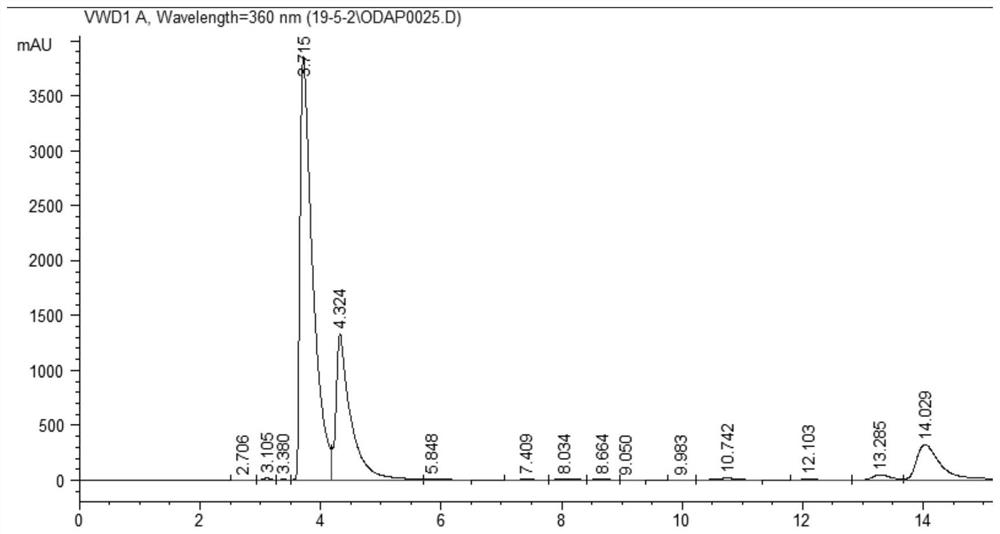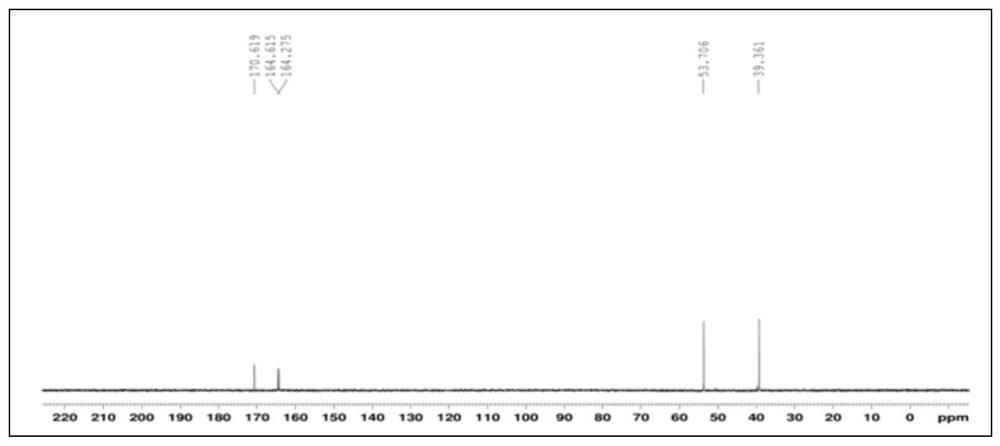Method for separating and purifying dencichine from legume plants
A technology for purifying notoginseng and notoginseng, which is applied in the separation/purification of carboxylic acid amides, chemical instruments and methods, organic chemistry, etc., and can solve problems affecting the utilization of notoginseng, environmental pollution, time-consuming and laborious, etc.
- Summary
- Abstract
- Description
- Claims
- Application Information
AI Technical Summary
Problems solved by technology
Method used
Image
Examples
Embodiment 1-1
[0066] Example 1-1: Extraction and purification of notoginseng
[0067] 1. Soak
[0068] Select Lathyrus bean seeds with full grains and no damage, and accurately weigh 500g (m 1 ), first scrub with tap water to remove dust and other impurities on the surface of the seeds; then wash three times with deionized water in the same way, and soak in 1L of deionized water for 6h.
[0069] 2. Pulping
[0070] Weigh the soaked lathyrus seeds and record it as m 2 , then the amount of water absorbed by 500g lathyrus seeds in a 6h time period is m 2 -m 1 . Crush the lathyrus seeds, separate the residue to obtain a slurry, let stand for 3 hours to settle the starch and crude fiber in the slurry, and keep the supernatant for later use. All the separated seed residues can be used as feed or organic fertilizer to make full use of useful resources.
[0071] 3. Coagulation and filtration
[0072] Take 3L of the above supernatant and heat it to near boiling, then add 7.5g CaSO 4 and 7.5...
Embodiment 1-2
[0088] Example 1-2: Extraction and purification of Panax notoginseng
[0089] 1. Soak
[0090] Select the full and undamaged pig’s dung bean seeds, and accurately weigh 500g (m 1 ), first scrub with tap water to remove dust and other impurities on the surface of the seeds; then wash three times with deionized water in the same way, and soak in 1L of deionized water for 6h.
[0091] 2. Pulping
[0092] Weigh the soaked pig's dung bean seeds and record it as m 2 , then the amount of water absorbed by 500g of pig's dung bean seeds in a 6h time period is m 2 -m 1 . Grind the seeds of the pig's dung bean, separate the residue to obtain a slurry, let it stand for 3 hours, so that the starch and crude fiber in the slurry can settle, and keep the supernatant for later use. All the separated seed residues can be used as feed or organic fertilizer to make full use of useful resources.
[0093] 3. Coagulation and filtration
[0094] Take 3L of the above supernatant and heat to 80...
Embodiment 1-3
[0099] Example 1-3: Extraction and purification of Panax notoginseng
[0100] 1. Soak
[0101] Select acacia bean seeds with full grains and no damage, and accurately weigh 500g (m 1 ), first scrub with tap water to remove dust and other impurities on the surface of the seeds; then wash three times with deionized water in the same way, and soak in 1L of deionized water for 6h.
[0102] 2. Pulping
[0103] Weigh the soaked acacia bean seeds and record it as m 2 , then the amount of water absorbed by 500g acacia bean seeds in a 6h time period is m 2 -m 1 . Crush the acacia bean seeds, separate the residue to obtain a slurry, let stand for 3 hours, so that the starch and crude fiber in the slurry settle, and keep the supernatant for later use. All the separated seed residues can be used as feed or organic fertilizer to make full use of useful resources.
[0104] 3. Coagulation and filtration
[0105] Take 3L of the above supernatant and heat to 90°C, then add 15g MgCl 2 ...
PUM
| Property | Measurement | Unit |
|---|---|---|
| melting point | aaaaa | aaaaa |
Abstract
Description
Claims
Application Information
 Login to View More
Login to View More - R&D
- Intellectual Property
- Life Sciences
- Materials
- Tech Scout
- Unparalleled Data Quality
- Higher Quality Content
- 60% Fewer Hallucinations
Browse by: Latest US Patents, China's latest patents, Technical Efficacy Thesaurus, Application Domain, Technology Topic, Popular Technical Reports.
© 2025 PatSnap. All rights reserved.Legal|Privacy policy|Modern Slavery Act Transparency Statement|Sitemap|About US| Contact US: help@patsnap.com



